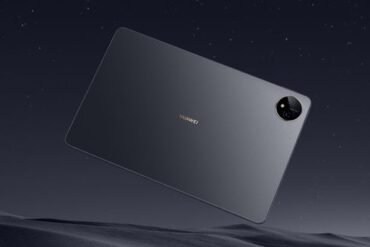RAM Speed and Compatibility: Finding the Right Balance
Table of Contents
The Importance of RAM Speed
When it comes to computer performance, RAM (Random Access Memory) plays a crucial role. RAM speed refers to how quickly data can be read from or written to the memory modules. While many users focus on the amount of RAM in their systems, the speed of the RAM is equally important. Here are a few reasons why RAM speed matters:
- Faster data transfer: RAM speed directly affects how quickly data can be transferred between the RAM and the processor. A higher RAM speed allows for faster data transfer, resulting in quicker response times and improved overall system performance.
- Enhanced multitasking: If you frequently run multiple programs simultaneously, having faster RAM speed can make a noticeable difference. It enables your computer to handle multiple tasks more efficiently, reducing lag and ensuring smooth multitasking.
- Optimized gaming experience: Gamers know the importance of having a powerful system that can handle demanding games. RAM speed can significantly impact gaming performance, particularly in games that require large amounts of data to be loaded quickly. Faster RAM speed ensures smoother gameplay, fewer stutters, and reduced loading times.
- Improved productivity: Whether you’re working on complex tasks, running resource-intensive software, or editing large files, faster RAM speed can enhance your productivity. It allows for quicker data access, faster file transfers, and smoother operation of applications, helping you complete tasks more efficiently.
- Overclocking potential: For advanced users and enthusiasts, faster RAM speed provides more headroom for overclocking. Overclocking is the process of running computer components at higher speeds than their default settings. With faster RAM, you can achieve higher overclocking speeds, pushing your system’s performance even further.
While RAM speed is important, it’s crucial to ensure compatibility with your system. Some motherboards and processors may have limitations on the maximum RAM speed they support. Therefore, it’s essential to research and select RAM modules that are compatible with your system’s specifications.
In conclusion, RAM speed plays a significant role in overall system performance, affecting data transfer speeds, multitasking capabilities, gaming experiences, productivity, and overclocking potential. When choosing RAM for your computer, consider both the amount and speed to find the right balance that meets your specific needs.
Factors Affecting RAM Compatibility
When it comes to upgrading or purchasing new RAM for your computer, compatibility is a crucial factor to consider. Not all RAM modules are compatible with every computer, and understanding the factors that influence compatibility can help you make the right choice. Here are some key factors to consider:
- Form Factor: The physical size and shape of the RAM module, such as DIMM (Dual Inline Memory Module) or SO-DIMM (Small Outline Dual Inline Memory Module), must match the slots on your motherboard. Desktop computers generally use DIMM modules, while laptops and smaller devices use SO-DIMM modules.
- Type of RAM: There are several types of RAM available, including DDR, DDR2, DDR3, and DDR4. Each type has different pin configurations and operating voltages. It is crucial to check your motherboard’s specifications to determine the supported RAM type.
- Memory Capacity: The maximum amount of RAM your computer can support is determined by the motherboard. It is essential to consider the maximum supported capacity and the number of RAM slots available. For example, if your motherboard supports a maximum of 16GB and has four RAM slots, you can install four 4GB modules or two 8GB modules.
- Speed: RAM speed, measured in MHz, affects the overall performance of your computer. While higher speeds can improve system responsiveness, not all motherboards support the highest speeds available. It is crucial to check the motherboard’s specifications to determine the supported RAM speed.
- Timing: RAM timing refers to the latency or delay between different operations. It is represented by a series of numbers, such as 9-9-9-24. The lower the timing numbers, the better the performance. However, not all motherboards support the lowest timing values. Consult the motherboard specifications to ensure compatibility.
- Operating System: Different operating systems have specific RAM requirements. For example, 32-bit operating systems can only utilize a maximum of 4GB of RAM, while 64-bit operating systems can support much higher capacities. Make sure your operating system can handle the amount of RAM you plan to install.
By considering these factors, you can ensure that the RAM you choose is compatible with your computer’s motherboard and meet your performance needs. It is always recommended to consult your motherboard’s manual or manufacturer’s website for detailed compatibility information before making a purchase.
Finding the Optimal RAM Speed
When it comes to choosing the optimal RAM speed for your computer, there are a few factors to consider. The right balance of speed and compatibility can greatly impact the performance of your system. Here are some tips to help you find the optimal RAM speed:
- Check your motherboard specifications: Before upgrading your RAM, it’s essential to check your motherboard’s specifications. This will determine the maximum RAM speed supported by your system. If you install RAM with a higher speed than what your motherboard supports, it will be downclocked to match the maximum supported speed.
- Consider your processor: The speed of your processor also plays a role in determining the optimal RAM speed. If you have a high-end processor, it can take advantage of faster RAM speeds, resulting in improved performance. However, if you have a slower processor, investing in high-speed RAM may not provide significant benefits.
- Balance between speed and capacity: It’s important to strike a balance between RAM speed and capacity. While faster RAM can enhance the overall performance of your system, having sufficient RAM capacity is equally important. If you frequently run memory-intensive applications or multitask heavily, prioritize higher RAM capacity over speed.
- Consider your usage: The type of tasks you perform on your computer should also influence your RAM speed choice. If you primarily use your computer for basic web browsing, word processing, and email, you may not need the highest RAM speed available. On the other hand, if you engage in activities like video editing, gaming, or 3D rendering, faster RAM speeds can significantly improve performance.
- Test and compare: If you’re unsure about the optimal RAM speed for your specific needs, try testing different speeds and comparing the results. Benchmarking tools can help you measure the performance impact of different RAM speeds and assist in finding the right balance for your system.
By considering these factors and finding the optimal RAM speed for your computer, you can maximize its performance and ensure a smooth computing experience.
Balancing Speed and Compatibility
When it comes to choosing the right RAM for your computer, finding the perfect balance between speed and compatibility is crucial. RAM, or Random Access Memory, plays a critical role in determining the overall performance of your system. Here’s what you need to know to strike the right balance:
- Consider your computer’s specifications: Before diving into the world of RAM, it’s essential to understand your computer’s specifications. Check the motherboard’s documentation or the manufacturer’s website to determine the maximum RAM capacity and compatible speeds. This information will help you make an informed decision.
- Understand the relationship between speed and compatibility: RAM speed is measured in MHz and refers to how quickly data can be transferred. While faster RAM can enhance performance, it’s essential to ensure compatibility with your motherboard. Using RAM with a higher speed than what your motherboard supports may result in the RAM being underclocked, rendering the extra speed useless.
- Consider your computer usage: The RAM speed you choose should be influenced by your computer usage. If you primarily use your computer for basic tasks like web browsing, word processing, and light gaming, a lower speed RAM should suffice. However, if you engage in resource-intensive activities such as video editing, graphic design, or gaming, opting for higher speed RAM can improve overall system performance.
- Budget constraints: Speed often comes at a higher price. It’s crucial to consider your budget and prioritize your needs accordingly. If you’re on a tight budget, it may be more practical to choose RAM that strikes a balance between speed and compatibility rather than going for the fastest option available.
- Consider future upgradeability: If you plan to upgrade your computer in the future, it’s wise to opt for RAM that offers headroom for expansion. Choosing RAM with a higher speed than what your current motherboard supports can ensure compatibility with future upgrades.
Ultimately, finding the right balance between RAM speed and compatibility involves considering your computer’s specifications, understanding the relationship between speed and compatibility, considering your usage, budget constraints, and future upgradeability. By taking these factors into account, you can make an informed decision that optimizes your system’s performance without overstepping compatibility boundaries.
Tips for Choosing the Right RAM
When it comes to upgrading your computer’s RAM, it is essential to choose the right one that meets your system’s requirements. Here are some tips to help you make the right decision:
- Compatibility: Before purchasing RAM, make sure it is compatible with your computer’s motherboard. Check the manufacturer’s specifications or use online tools to determine the type and speed of RAM your motherboard supports.
- Capacity: Consider the amount of RAM you need based on your computing needs. If you use your computer for everyday tasks like web browsing and word processing, 8GB to 16GB of RAM should be sufficient. For more demanding tasks like gaming or video editing, opt for 16GB or more.
- Speed: RAM speed affects the overall performance of your computer. However, it is crucial to find the right balance between speed and compatibility. While higher speed RAM can improve performance, it may not be supported by your motherboard. Check the maximum speed your motherboard can handle and choose RAM accordingly.
- DDR Generation: Determine the DDR generation supported by your motherboard. DDR4 is the latest and fastest type of RAM, while DDR3 and older versions may still be compatible with older systems. However, it is recommended to go for the latest DDR generation for better performance and future-proofing.
- Brand and Quality: Stick to reputable brands when purchasing RAM to ensure reliability and compatibility. Brands like Corsair, Crucial, Kingston, and G.Skill are known for producing high-quality RAM modules.
- Budget: Consider your budget when choosing RAM. Higher capacity and faster RAM modules tend to be more expensive. Evaluate your needs and strike a balance between performance and cost.
By following these tips, you can ensure that you choose the right RAM for your computer, optimizing its performance and providing a smoother computing experience.

























